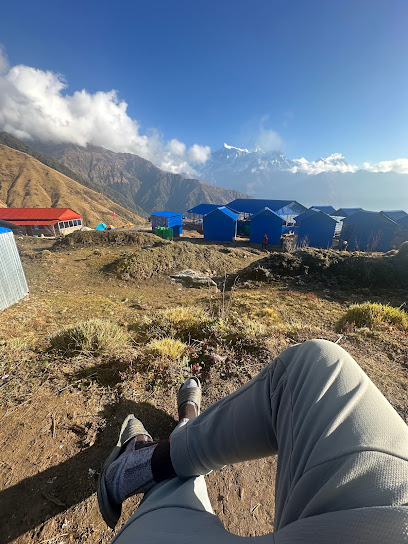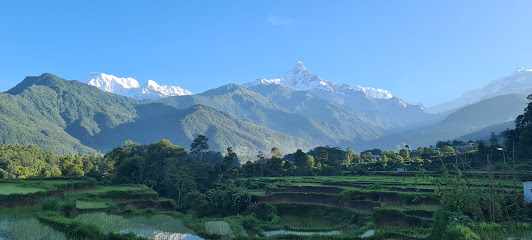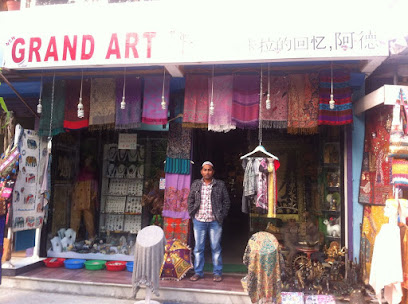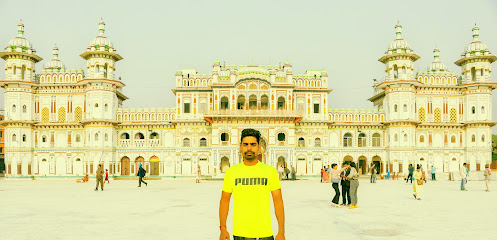
Tilicho Lake: The Jewel of the Himalayas
Tilicho Lake in Nepal: Experience the serene beauty and spiritual tranquility of one of the world's highest lakes, nestled in the heart of the Annapurna range.
Tilicho Lake, nestled high in the Annapurna range of the Himalayas, is a stunning destination for adventurous travelers. At an altitude of 4,919 meters, it is one of the highest lakes in the world. Known for its captivating turquoise waters, the lake offers a spectacular view against the backdrop of snow-covered peaks. The journey to Tilicho Lake is as rewarding as the destination itself, with the trek passing through diverse landscapes, from lush forests to rocky terrains. The lake holds significant cultural and spiritual importance. For centuries, it has been a pilgrimage site for Hindus, who believe that the lake is a holy place mentioned in the Ramayana. The serene environment around the lake provides a peaceful retreat for those seeking solitude and reflection. The best time to visit is during the autumn months of October and November when the weather is clear and the trekking paths are more accessible. Trekkers to Tilicho Lake often start their journey from the town of Manang, which serves as a gateway to the Annapurna Circuit. The trek is challenging, requiring a good level of fitness and acclimatization, but the breathtaking scenery and the sense of accomplishment make it all worthwhile. Along the way, you will encounter friendly locals, experience the rich culture of the region, and witness the incredible biodiversity of the Himalayas.
Local tips in Tilicho Lake
- Acclimatize properly to avoid altitude sickness due to the high elevation of Tilicho Lake.
- Visit during the autumn months for the best weather conditions and clearer trekking paths.
- Start your trek from Manang, which is a popular base for trekkers heading to Tilicho Lake.
- Carry warm clothing as temperatures can drop significantly, especially at night.
- Hire a local guide for a safer and more informative trekking experience.
- Ensure you have proper trekking permits before starting your journey.
- Stay hydrated and take regular breaks to manage the physical demands of the trek.
Tilicho Lake: The Jewel of the Himalayas
Tilicho Lake, nestled high in the Annapurna range of the Himalayas, is a stunning destination for adventurous travelers. At an altitude of 4,919 meters, it is one of the highest lakes in the world. Known for its captivating turquoise waters, the lake offers a spectacular view against the backdrop of snow-covered peaks. The journey to Tilicho Lake is as rewarding as the destination itself, with the trek passing through diverse landscapes, from lush forests to rocky terrains. The lake holds significant cultural and spiritual importance. For centuries, it has been a pilgrimage site for Hindus, who believe that the lake is a holy place mentioned in the Ramayana. The serene environment around the lake provides a peaceful retreat for those seeking solitude and reflection. The best time to visit is during the autumn months of October and November when the weather is clear and the trekking paths are more accessible. Trekkers to Tilicho Lake often start their journey from the town of Manang, which serves as a gateway to the Annapurna Circuit. The trek is challenging, requiring a good level of fitness and acclimatization, but the breathtaking scenery and the sense of accomplishment make it all worthwhile. Along the way, you will encounter friendly locals, experience the rich culture of the region, and witness the incredible biodiversity of the Himalayas.
When is the best time to go to Tilicho Lake?
Iconic landmarks you can’t miss
Tilicho Lake View Point
Discover the breathtaking beauty of Tilicho Lake View Point, home to the world’s highest lake and stunning Himalayan vistas.

Thulakot hill
Discover the breathtaking beauty of Thulakot Hill, an unmissable tourist attraction in Kalika, perfect for nature lovers and adventure seekers.

Unmissable attractions to see
Thulakot hill
Discover the stunning views and tranquility of Thulakot Hill, a serene escape in Kalika, perfect for nature lovers and adventure seekers.

Khumai Danda
Discover the breathtaking views and tranquility of Khumai Danda, a hidden gem in the heart of the Himalayas, perfect for all nature lovers.

Shree kharka
Experience the breathtaking beauty and rich culture of Shree Kharka, a serene tourist attraction in the heart of Manang, Nepal.

Thorong High Camp View Point
Experience the breathtaking views and serene beauty of Thorong High Camp View Point, a hidden gem in the Annapurna region of Nepal.

Chongkor View Point I
Discover stunning views of Manang Valley and the Annapurna range at Chongkor View Point, a breathtaking must-see in the heart of Nepal's Himalayas.

गंगापूर्ण ताल
Experience the breathtaking beauty of Gangapurna Lake in the heart of the Annapurna region, a tranquil oasis for nature lovers and trekkers alike.

Syang Khola Bridge
Discover the breathtaking views and cultural richness of the Syang Khola Bridge in Jomsom, Nepal, a perfect spot for nature lovers and adventure seekers.

Khadarjung
Experience the breathtaking beauty and rich culture of Khadarjung, a hidden tourist gem nestled in Sardi Khola, Nepal.

Churunga view point
Discover the stunning vistas at Churunga View Point in Puranchour, a must-visit destination for nature lovers and photography enthusiasts.

Tilicho Trail
Experience the breathtaking landscapes and cultural richness of the Tilicho Trail in Nepal, a premier destination for hiking enthusiasts and adventure seekers.

Yak Kharka
Discover the serene beauty and vibrant culture of Yak Kharka, the gateway to the majestic Annapurna region in the heart of the Himalayas.

Kagbeni Dobato
Discover the stunning landscapes and rich Tibetan culture of Kagbeni Dobato, a hidden gem in the heart of Muktinath, Nepal.

Dhakpochhe Tashiling View Point
Experience stunning panoramic views and tranquility at Dhakpochhe Tashiling View Point in Jhong, Nepal, a must-visit for nature enthusiasts.

View Point
Discover the stunning vistas at Manang's View Point, where the majestic Himalayan landscape meets serene tranquility for an unforgettable travel experience.

Tiunche Taal
Discover the enchanting Tiunche Taal, a hidden oasis in Namarjung, Nepal, surrounded by breathtaking landscapes and serene waters.

Essential places to dine
Sharma's unique Restaurant
Discover authentic Nepalese flavors at Sharma's Unique Restaurant in Pokhara – where great food meets stunning views.

Unique lake view Resturant & Lodge
Experience exquisite dining at Unique Lake View Restaurant & Lodge with stunning lakeside views in Lekhnath, Nepal.

Tilicho Tea House
Discover authentic Himalayan flavors at Tilicho Tea House in Khangsar – where every meal is a journey through tradition.

Markets, malls and hidden boutiques
Tilicho Lake View Point
Experience the awe-inspiring beauty of Tilicho Lake View Point, a must-visit destination in the heart of the Himalayas, ideal for adventurers and nature lovers.

Tilicho Lake
Explore the enchanting beauty of Tilicho Lake, a stunning glacial lake nestled in the majestic Himalayas, perfect for adventure seekers and nature lovers.

klod Fashion Exquisite
Explore Klod Fashion Exquisite in Pokhara for a unique shopping experience blending traditional styles with modern fashion.

New Grand Art Inn Pashmina Store
Explore exquisite pashmina shawls and authentic Nepalese handicrafts at the New Grand Art Inn Pashmina Store in Pokhara.

Nepal Kathmandu Pokhara
Explore the rich spiritual heritage of Nepal at this unique Buddhist supplies store in the heart of Kathmandu, filled with sacred artifacts and cultural treasures.

Nepali Creation Souvenirs Shop
Discover authentic Nepali handicrafts and souvenirs at Nepali Creation Souvenirs Shop in Pokhara, a treasure trove for unique gifts and cultural keepsakes.

Triti Boutique
Explore the artistry of Namarjung at Triti Boutique, where unique fashion meets local craftsmanship in a delightful shopping experience.

Gina Burton
Explore the vibrant world of batik clothing at Gina Burton, where tradition meets modern style in a stunning array of textiles.

Tara lake
Discover the tranquility and natural beauty of Tara Lake in Namarjung, a perfect retreat for relaxation and adventure amidst stunning landscapes.

Apkachi
Discover the heart of Namarjung at Apkachi, where local culture and unique products meet for an unforgettable shopping experience.

Suman Budhathoki
Explore the vibrant Suman Budhathoki in Dhiri for unique local crafts and a glimpse into authentic Nepali culture.

कोटिगाउँ बगरबजार
Discover authentic Nepali culture at कोटिगाउँ बगरबजार, a charming general store in Melaluli offering local goods and unique souvenirs.

उजीर चाैक
Explore the vibrant market of उजीर चाैक in Namarjung for an authentic taste of local culture and fresh produce.

Marketing collection
Explore the rich tradition of leather crafting in Etari, where skilled artisans create exquisite handmade leather goods that tell a story.

Shiwani furniture
Explore Shiwani Furniture in Namarjung for unique, handcrafted pieces that embody the beauty of Nepalese design and craftsmanship.

Essential bars & hidden hideouts
Krazy Gecko
Experience the vibrant atmosphere of Krazy Gecko, where delicious food and stunning views in Pokhara come together for an unforgettable dining experience.

Tilicho Tea House
Discover the flavors of the Himalayas at Tilicho Tea House, where every dish is a journey and every view is breathtaking.

KINGDOM RESTRO BAR & LIVE MUSIC (THAKALI BHANCHA GHAR)
Discover vibrant nightlife and authentic Nepalese cuisine at Kingdom Restro Bar & Live Music in Jomsom, where every night comes alive with music and flavor.

Lamahi Dang
Explore the vibrant nightlife of Lamahi Dang, a welcoming bar in Namarjung, where local culture meets great drinks and friendly faces.

Mamta
Experience the vibrant nightlife at Mamta, a cozy bar in Namarjung offering a delightful selection of beverages in a welcoming atmosphere.

TT ministar
Discover the charming TT ministar bar in Sardi Khola, where local culture meets a cozy atmosphere for an unforgettable experience.

Deepak's cottage
Discover the serene beauty of Lwang Ghalel at Deepak's Cottage, where authentic flavors and breathtaking views await every traveler.

Black and white bar and music venue
Discover the lively Black and White Bar in Machhapuchchhre, where vibrant music and local flavors create an unforgettable nightlife experience.

Sumit giri
Discover Sumit Giri: A vibrant bar in Namarjung, blending local flavors with a lively atmosphere for a memorable night out.

Vasandhara choki
Discover the vibrant atmosphere of Vasandhara Choki, a bar in Namarjung perfect for relaxation and socializing with locals and fellow travelers.

Chakwa 4 yekdara
Experience the lively ambiance and refreshing drinks at Chakwa 4 Yekdara, a must-visit bar in Namarjung, Nepal for tourists seeking relaxation and entertainment.

Lungra achham
Experience the vibrant nightlife at Lungra Achham, a bar in Namarjung offering unique drinks and breathtaking views.

Kathmandu balaju
Explore the vibrant atmosphere and unique flavors at Kathmandu Balaju, your cultural retreat in Namarjung, Nepal.

Rabin bhujel
Discover the vibrant nightlife of Namarjung at Rabin Bhujel, a bar offering refreshing drinks and a lively atmosphere perfect for relaxation.

Roka homestay
Discover the charm of Roka Homestay in Lwang Ghalel, a serene escape into Nepali culture and breathtaking natural beauty.

Local Phrases about Tilicho Lake
-
- Helloनमस्ते
[namaste] - Goodbyeअलविदा
[alavida] - Yesहो
[ho] - Noहोइन
[hoin] - Please/You're welcomeकृपया
[krupaya] - Thank youधन्यवाद
[dhanyabad] - Excuse me/Sorryमाफ गर्नुहोस्
[maaf garnuhos] - How are you?तपाईंलाई कस्तो छ?
[tapailai kasto cha?] - Fine. And you?राम्रो छ। तपाईंलाई?
[ramro cha. tapailai?] - Do you speak English?तिमीले अंग्रेजी बोल्छौ?
[timile angreji bolchau?] - I don't understandमैले सम्झिन
[maile samjhin]
- Helloनमस्ते
-
- I'd like to see the menu, pleaseकृपया मेनु हेर्न चाहन्छु
[krupaya menu hern chahanchu] - I don't eat meatम मासु खाँदैन
[ma masu khandain] - Cheers!चियर्स!
[cheers] - I would like to pay, pleaseकृपया भुक्तानी गर्न चाहन्छु
[krupaya bhuktani garn chahanchu]
- I'd like to see the menu, pleaseकृपया मेनु हेर्न चाहन्छु
-
- Help!बचाउनुहोस्!
[bachaunuhos] - Go away!जानुहोस्!
[januhos] - Call the Police!पुलिसलाई फोन गर्नुहोस्!
[polis lai phone garnuhos] - Call a doctor!डाक्टरलाई फोन गर्नुहोस्!
[daktar lai phone garnuhos] - I'm lostम गुम्बिएको छु
[ma gumbieko chu] - I'm illम अस्वस्थ छु
[ma aswasth chu]
- Help!बचाउनुहोस्!
-
- I'd like to buy...म खरिद गर्न चाहन्छु...
[ma kharid garn chahanchu] - I'm just lookingम सिर्जना गर्दैछु
[ma sirjana gardaichu] - How much is it?यो कति हो?
[yo kati ho?] - That's too expensiveयो धेरै महँगो छ
[yo dherai mahango cha] - Can you lower the price?के तपाईं मूल्य कम गर्न सक्नुहुन्छ?
[ke tapain mulya kam garn saknuhuncha?]
- I'd like to buy...म खरिद गर्न चाहन्छु...
-
- What time is it?कति बजेको छ?
[kati bajeko cha?] - It's one o'clockयो एक बजे हो
[yo ek baje ho] - Half past (10)(१०) बजे ढुङ्गा
[(10) baje dhunga] - Morningबिहान
[bihan] - Afternoonदिउँसो
[diouso] - Eveningसाँझ
[sangh] - Yesterdayहिजो
[hijo] - Todayआज
[aaj] - Tomorrowभोलि
[bholi] - 1एक
[ek] - 2दुई
[dui] - 3तीन
[tin] - 4चार
[char] - 5पाँच
[pach] - 6छ
[chha] - 7सात
[saat] - 8आठ
[aath] - 9नौ
[nau] - 10दस
[das]
- What time is it?कति बजेको छ?
-
- Where's a/the...?...कहाँ छ?
[...kaha cha?] - What's the address?ठेगाना के हो?
[thegana ke ho?] - Can you show me (on the map)?तपाईंले मलाई देखाउन सक्छिन् (नक्सामा)?
[tapainle malai dekhaun sakchin (naksama)?] - When's the next (bus)?अर्को (बस) कहिले हो?
[arko (bas) kahile ho?] - A ticket (to ....)एक टिकट (....मा)
[ek ticket (....ma)]
- Where's a/the...?...कहाँ छ?
History of Tilicho Lake
-
Tilicho Lake, nestled in the Annapurna Range of the Himalayas, holds a significant place in ancient Hindu mythology. It is believed to be the ancient Kak Bhusundi Lake mentioned in the epic Ramayana. According to legend, the sage Kak Bhusundi, in the form of a crow, narrated the story of Ramayana to Garuda, the king of birds, near this sacred lake.
-
The lake remained relatively unknown to the Western world until the mid-20th century. The first recorded visit by a Western explorer was in 1950 by Maurice Herzog, a French mountaineer. Herzog and his team were on an expedition to climb Annapurna I, and they documented Tilicho Lake in their accounts, bringing it to international attention.
-
Tilicho Lake is one of the highest lakes in the world, situated at an altitude of 4,919 meters (16,138 feet). The lake is a significant geological site due to its location in the tectonically active Himalayan region. The surrounding area is composed of ancient sedimentary rocks, offering insights into the geological history of the Himalayas, including evidence of ancient marine life from when the region was submerged under an ancient ocean.
-
Tilicho Lake holds immense cultural importance for the local communities, particularly the Gurung and Thakali people. It is considered a sacred site, and many pilgrims visit the lake to perform religious rituals and offerings. The lake is also an integral part of local folklore and traditions, with numerous stories and songs dedicated to its beauty and sanctity.
-
In recent decades, Tilicho Lake has become a popular destination for trekkers and adventurers. It is a key attraction on the Annapurna Circuit, one of the most famous trekking routes in Nepal. The challenging trek to the lake offers breathtaking views of the Annapurna and Nilgiri mountain ranges, attracting thousands of tourists each year. Efforts are ongoing to balance tourism with environmental conservation to preserve the lake's pristine condition.
Tilicho Lake Essentials
-
Tilicho Lake is located in the Manang district of Nepal. The nearest international airport is Tribhuvan International Airport in Kathmandu. From Kathmandu, you can take a domestic flight to Pokhara, which is the gateway to the Annapurna region. From Pokhara, you will need to travel by jeep or bus to the village of Besisahar, the starting point of the Annapurna Circuit Trek. From Besisahar, you can either trek or take a jeep to Manang village. The trek to Tilicho Lake usually begins from Manang, and it is recommended to allocate several days for acclimatization due to the high altitude.
-
Transportation options in the Tilicho Lake area primarily include trekking and jeep rides. Public buses and shared jeeps operate between Pokhara and Besisahar, and from Besisahar to Manang. Private jeeps can also be hired for a more comfortable journey. Once you reach Manang, trekking is the primary mode of transportation to Tilicho Lake. Ensure you have a sturdy pair of trekking boots and appropriate gear for the challenging terrain.
-
The official currency in Nepal is the Nepalese Rupee (NPR). It is advisable to carry sufficient cash as ATMs are scarce in remote areas like Manang and Tilicho Lake. Credit cards are accepted in some hotels and restaurants in Kathmandu and Pokhara, but cash is the preferred mode of payment in the trekking regions. It is recommended to exchange currency in Kathmandu or Pokhara before heading towards Tilicho Lake.
-
Tilicho Lake and the surrounding trekking routes are generally safe for tourists. However, standard precautions should be taken. Avoid trekking alone and always stay on marked trails. Be mindful of altitude sickness and allocate time for acclimatization. Keep your belongings secure and avoid displaying valuables. There are no specific high-crime areas targeting tourists, but staying vigilant and aware of your surroundings is always advisable.
-
In case of emergency, contact the local authorities or the nearest health post. The emergency contact number in Nepal is 100 for police, 101 for fire, and 102 for medical emergencies. It is essential to have travel insurance that covers medical emergencies and helicopter evacuation due to the remote nature of Tilicho Lake. For minor health issues, there are pharmacies in Manang where you can purchase over-the-counter medications.
-
Fashion: Do wear modest clothing, especially in villages and religious sites. Avoid wearing revealing clothing. Religion: Do respect local customs and traditions. Always remove your shoes before entering temples and monasteries. Public Transport: Do be respectful and give up your seat to elderly passengers. Don't eat or drink on public transport. Greetings: Do greet people with a 'Namaste' (palms together) as a sign of respect. Eating & Drinking: Do try local delicacies and accept food offerings graciously. Don't refuse hospitality, as it is considered impolite.
-
To experience Tilicho Lake like a local, engage with the local communities in Manang. Visit local teahouses and try traditional Nepali dishes such as dal bhat and momos. Participate in local festivals if your visit coincides with one. Learning a few basic phrases in Nepali can go a long way in building rapport with the locals. Also, consider participating in local conservation efforts to preserve the natural beauty of the region.
Nearby Cities to Tilicho Lake
-
Things To Do in Bandipur
-
Things To Do in Gorkha
-
Things To Do in Chitwan
-
Things To Do in Lumbini
-
Things To Do in Kathmandu
-
Things To Do in Patan
-
Things To Do in Bhaktapur
-
Things To Do in Nagarkot
-
Things To Do in Namche Bazaar
-
Things To Do in Lucknow
-
Things To Do in Patna
-
Things To Do in Varanasi
-
Things To Do in Kanpur
-
Things To Do in Darjeeling
-
Things To Do in Gangtok








